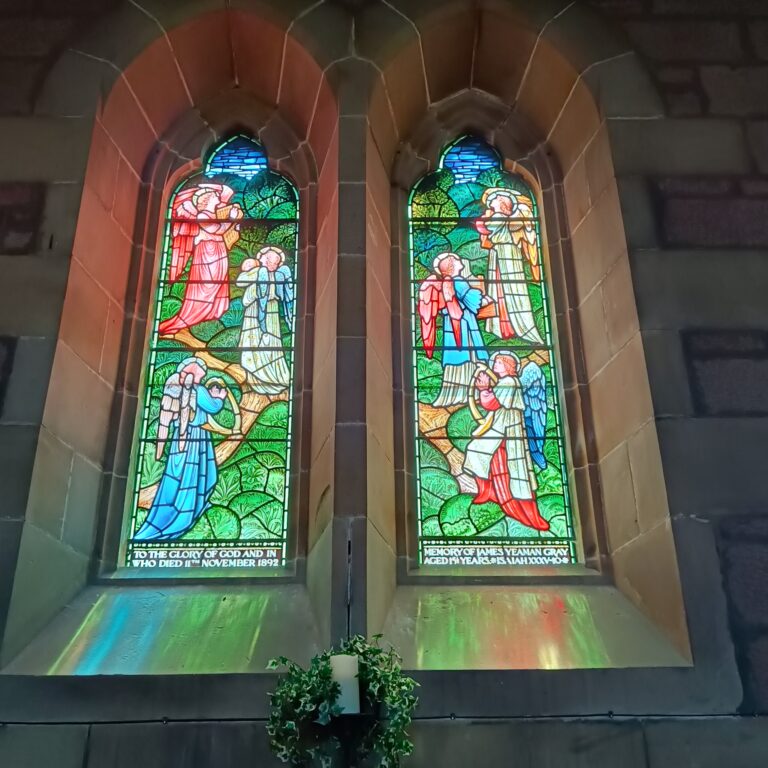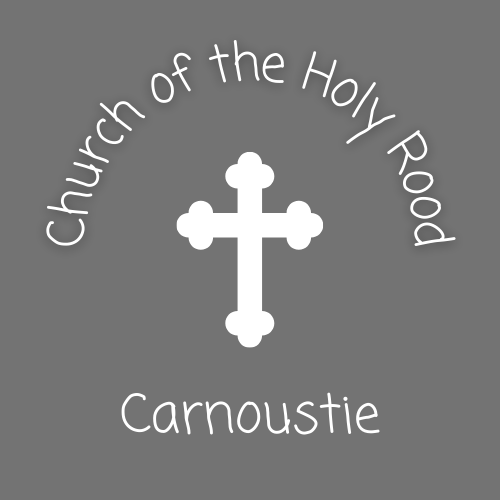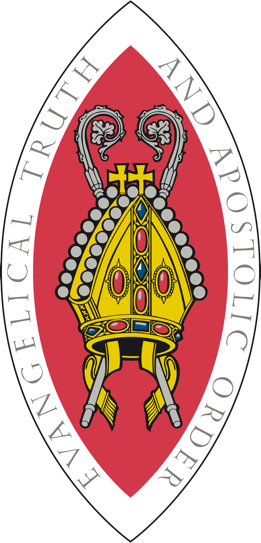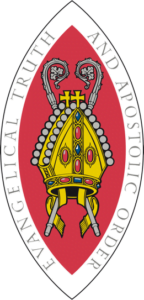Our History
Originating from Episcopal services held in the Carnoustie Mission Rooms during 1876, the foundation stone of the Church of the Holy Rood was laid on the 4th August 1880. In January 1881, the charge of the Congregation was undertaken by the Reverend A.M. Sugden and on the 30th June 1881, the new Church was dedicated to the Holy Rood and consecrated by the Bishop of Brechin.
Designed by Mr Alexander Ross, the architect of the St Andrew’s Cathedral, Inverness, it has an early Scottish Gothic Style, which is simple yet severe with bold mouldings. The outer walls of the Church are built with stone, obtained locally from Carmyllie and Fife, whilst the interior walls are of Arbroath red sandstone, relieved with white freestone dressings.
The Nave is entered through a large and roomy porch. The round bell tower is similar to that of Brechin Cathedral and the traceried window area at the top, houses the bells. A single bell hung there until 1914, at which time a gifted set of eight tubular bells were installed. The interior roof and woodwork are of pitch pine and the choir stalls are of oak.
Natural light floods into the Church through a triple light-traceried window in the West end, double lancet windows in the North and South walls and a triple lancet in the East gable of the chancel. Through time, most of these windows have been replaced by stained glass, as memorial windows., including memorial windows to founder members, congregation members across the generations, and the Piper Alpha oil rig disaster in July 1988. Together these windows illustrate more than 100 years of stained-glass design, from the late 19th to the late 20th centuries.


Various items found within the church, including the front side candlesticks, the baptismal water jug at the font, the Episcopal chair, the tabernacle, the lectern, the prayer desk and the chalice, all bear individual inscriptions of dedication, and the ornate lectern is dated 1894, the year in which the completed Church was consecrated.
We welcome you to visit the church – to enjoy the building and appreciate its true beauty.
Find out more about the church in this extended history information sheet.


